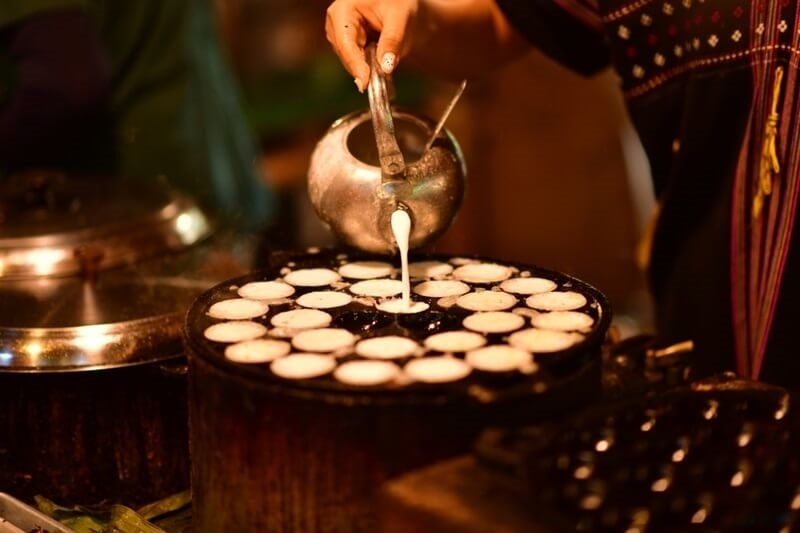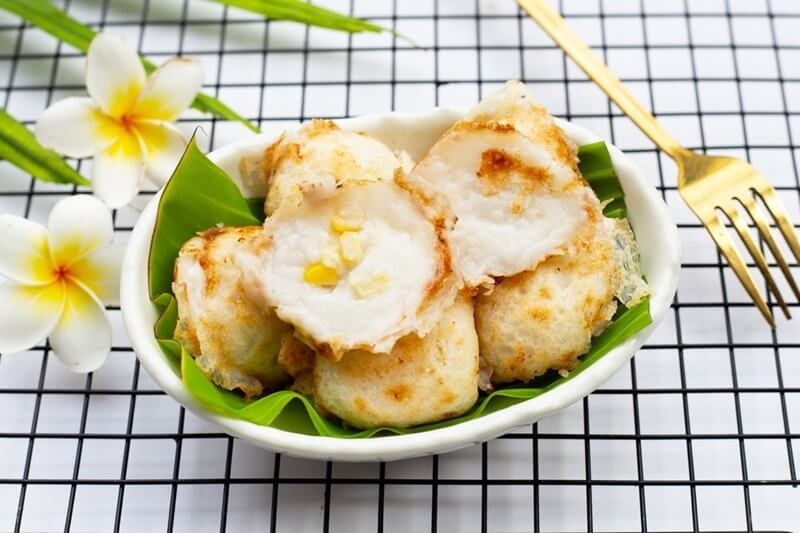
If you've ever wandered through a street food Thai market, chances are your nose led you straight to the scent of something warm, sweet, and slightly nutty. And no, it’s not your imagination—what you’re smelling is khanom krok, one of Thailand’s most beloved old-school snacks. Tiny, sizzling coconut milk pancakes with golden crispy edges and gooey centers that melt on your tongue? Yeah. They’re kind of magical.
But what makes this Thai dessert so irresistible? Why do foodies travel across continents just to get a taste of the authentic stuff bubbling away on cast-iron pans in Bangkok’s alleys? Well, let’s find out.
Khanom krok (pronounced ka-nom krok) is a bite-sized coconut pancake traditionally made on a dimpled cast-iron pan. Think half-moons with crispy edges, tender centers, and a creamy-salty-sweet flavor that’s just... addictive.
The base? Rice flour and coconut milk. That’s it. Then there’s a sweet-savory topping—corn, spring onions, taro, or pumpkin are common. Served hot, usually right off the griddle, they come in pairs like tiny clamshells. Two halves stuck together. A pocket of joy.
This isn’t just dessert—it’s a moment. A taste of nostalgia. A bite of history.

Khanom krok isn’t some trendy new fusion food. It's been around for centuries. Like, Ayutthaya Kingdom old. That’s 14th-century Thailand, for those not keeping track.
Traditionally prepared in rural villages over clay stoves, khanom krok was a temple offering, a humble home snack, and a street food staple long before modern food trends complicated things. Passed down from generation to generation, it’s a quiet symbol of Thailand’s culinary wisdom—simple ingredients, handled with love, producing unforgettable results.
Isn’t that what food should be?
Let’s break down the charm. Khanom krok usually involves two batters. Yes, two. One for the outer crispy shell, and another for the soft, rich center.
The outer layer is thinner, often made with a blend of rice flour, a pinch of salt, and light coconut milk—this gives it that golden crust.
The inner layer is thicker, richer. Think full-fat coconut cream, sugar, and maybe a touch of tapioca flour for creaminess.
You pour the outer layer first, then a dollop of the inner mix right in the middle. Top it with chopped scallions, corn, or even durian if you're feeling adventurous. Then let it sizzle until the edges pull away from the pan, leaving you with a caramelized, golden bite of heaven.
Hungry yet?
If you want to see khanom krok in its element, visit any bustling street food Thai market—Chiang Mai, Phuket, Bangkok, or even those pop-up night bazaars tucked away in smaller towns. It’s always the same rhythm: cast iron sizzling, coconut aroma rising, and a vendor flipping these tiny beauties with chopsticks like a total pro.
There’s something hypnotic about watching the whole process. The batter sizzling in the curved molds. The toppings going in one-by-one. The steam. The gentle crack as two halves are pressed together and scooped out.
And then you taste one. Sweet coconut cream. Slightly crunchy crust. A burst of warm corn or scallion. It's sweet and savory and soft and crispy—all in one bite. Absolute magic.
Before you panic—no, you don’t need a fancy Thai street cart or a temple stove. You can totally make khanom krok at home. It’s easier than you think, especially if you’ve got a takoyaki or aebleskiver pan (yes, that Nordic pancake pan hiding in your kitchen cabinet might actually come in handy).
Here’s a basic khanom krok recipe (not too fussy, just the good stuff):
For the outer shell (batter 1):
For the inner filling (batter 2):
Optional toppings:
Grease your pan lightly, heat it on medium, and pour a small amount of batter 1 into each cup. Quickly follow with a spoonful of batter 2. Add your toppings. Cover and let it cook until the edges brown and the center sets. Scoop out two halves and stick them together like a sandwich—or just eat them single. Either way, good luck stopping at one.
Also Check Out: Experience the Bangkok Asian Street Food Festival 2025
Simple. It hits every note.
Texture? Crispy. Creamy. Chewy.
Flavor? Sweet. Savory. Slightly salty.
Portion? Perfect. Small enough to eat five and still want more.
Vibe? Nostalgic. Comforting. Fun.
Also, there’s something about foods that are made right in front of you that taps into all your senses. The smell of coconut milk cooking down. The visual of batter puffing up. The slight hiss as it hits the pan. You’re not just eating—you’re experiencing.
And while some Thai food dishes can be heavy or complex, khanom krok is joyfully light. A snack. A dessert. A breakfast-on-the-go. A treat-after-dinner. It fits into your day without effort.
Thailand’s street food scene is world-famous—and rightly so. From savory skewers to fiery papaya salads, Thai foods reflect a perfect balance of flavor and technique. But in the dessert category? Khanom krok is the quiet MVP.
It’s not Instagram flashy. It’s not over-the-top fusion. It’s authentic. Humble. Resilient. A dish that’s survived the test of time because it’s that good.
In a world of constant reinvention, there’s something so refreshing about food that doesn’t need changing.
Like many traditional dishes, khanom krok is getting a modern twist in some corners. Think versions with Nutella, matcha, or even cheese. Some purists roll their eyes—but let’s be honest, food evolves. The important part is keeping the roots strong while letting the branches grow.
Young Thai chefs are reviving old-school techniques, setting up mobile carts with a nod to their grandmothers’ recipes. Food bloggers around the world are trying their hand at home versions. Even high-end Thai restaurants are giving khanom krok a spot on their menus—with elevated ingredients like mango, coconut jam, or even foie gras (yes, really).
And yet, no matter how fancy it gets, the essence of khanom krok stays the same: warmth, texture, balance, and that first satisfying bite of coconut cream oozing into the crispy shell.
Let’s be real—there’s never a wrong time to discover a new favorite snack. But khanom krok is more than that. It’s an edible love letter to Thai heritage. A comfort food. A bite-sized reminder that simplicity, when done right, can be unforgettable.
Whether you find it at a market stall in Chiang Mai, a pop-up vendor at a festival, or make it fresh on your stove with that oddly-shaped pan you forgot you had—just try it.
Because once you do? There’s no going back.
In Case You Missed It: Bangkok Food Guide: Explore the Best Culinary Delights
Khanom krok isn’t just food. It’s culture. It’s history. It’s the kind of dish that doesn’t just fill your stomach—it tells a story.
So the next time you think about Thai food dishes, go beyond the pad Thai and green curry. Seek out the little round pancakes sizzling on a roadside grill. Let the coconut steam hit your face. Grab a warm pair and take that first bite.
Sweet. Creamy. Crispy. Familiar and new, all at once.
That’s khanom krok.
This content was created by AI